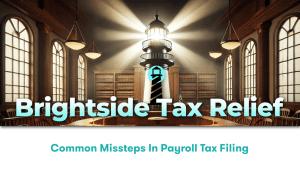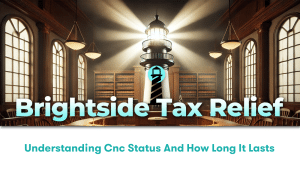Unveiling the Complexities of the Trust Fund Recovery Penalty
It’s crucial in today’s fast-paced business world to be aware of your tax obligations. One area often overlooked by businesses, yet critical in IRS tax compliance, is the Trust Fund Recovery Penalty (TFRP). This penalty is a powerful tool used by the IRS to enforce tax compliance particularly concerning employment taxes.
A Brief Overview of the Trust Fund Recovery Penalty
Often, busy entrepreneurs mistakenly think that they can use money withheld for payroll taxes for other financial necessities. However, this can lead to the enforcement of the Trust Fund Recovery Penalty on their business. The TFRP is imposed on businesses that fail to meet their payroll tax obligations. Specifically, those taxes held in ‘trust’ by a business on behalf of their employees to be transferred to the IRS.
Naturally, the depth and breadth of IRS tax code relating to the TFRP are extensive. This article aims to distill the most important aspects into plain English, and bring immense value and guidance to you, the reader.
Critical Aspects of the Trust Fund Recovery Penalty
Understanding the following key aspects of the TFRP can guide your business in maintaining tax compliance:
• The TFRP is a way for the IRS to ensure it receives withheld taxes from businesses. The IRS can reclaim these taxes directly from business owners or employees who are responsible for managing those funds if the taxes are not properly paid.
• The IRS determines liability for the TFRP by identifying who is responsible for withholding and paying these taxes, and if they willfully failed to do either. Willfulness, in this case, indicates a voluntary, intentional violation of a known legal duty.
• Not being aware of the rule doesn’t exempt a business from the penalty; ignorance isn’t considered a plausible defense.
The Consequences of the Trust Fund Recovery Penalty
The repercussions of falling foul of the TFRP can be hefty. If the IRS determines that a business owner or employee is responsible and has willfully failed to pay withheld taxes, they can impose the TFRP to recoup the unpaid funds.
This penalty is equal to the total amount of tax revenue that should have been collected. Additionally, the IRS can also charge interest on the unpaid amount from the due date of the withheld tax until the TFRP is fully paid.
Contesting the Trust Fund Recovery Penalty
Understandably, businesses facing a TFRP may want to contest its imposition. However, contesting this penalty can be a complex process. It involves going against the IRS, which can be daunting without the guidance of seasoned tax professionals like Brightside Tax Relief LLC.
How do you successfully challenge the TFRP? By proving either that you weren’t responsible for withholding or paying the taxes, or that your failure to do so wasn’t willful. One key tactic is to ensure you have a deep understanding of the applicable IRS tax code and regulations, which Brightside Tax Relief LLC can provide.
Preventing the Trust Fund Recovery Penalty
As a business professional, you can take certain measures to minimize your chances of falling prey to TFRP:
• Be diligent in remitting your employee payroll taxes as and when due.
• Keep thorough records of your tax payments to prove your compliance.
• Consult with a tax professional to ensure you understand your tax obligations.
In summary, knowledge is key. To gain a more comprehensive idea about the TFRP, please consider checking the information provided by the IRS.
In Conclusion: Trust Fund Recovery Penalty
The Trust Fund Recovery Penalty is not a trivial matter. As a business professional, understanding it can help ensure the financial health and integrity of your business, and the continued trust of your employees. This is where Brightside Tax Relief LLC comes in. Our nationwide tax relief services are designed to meet your needs, from preventing a TFRP to helping you contest one. We are here to provide critical insights and take decisive action to handle your tax concerns. So, let’s navigate the complexities of the IRS tax world together.




